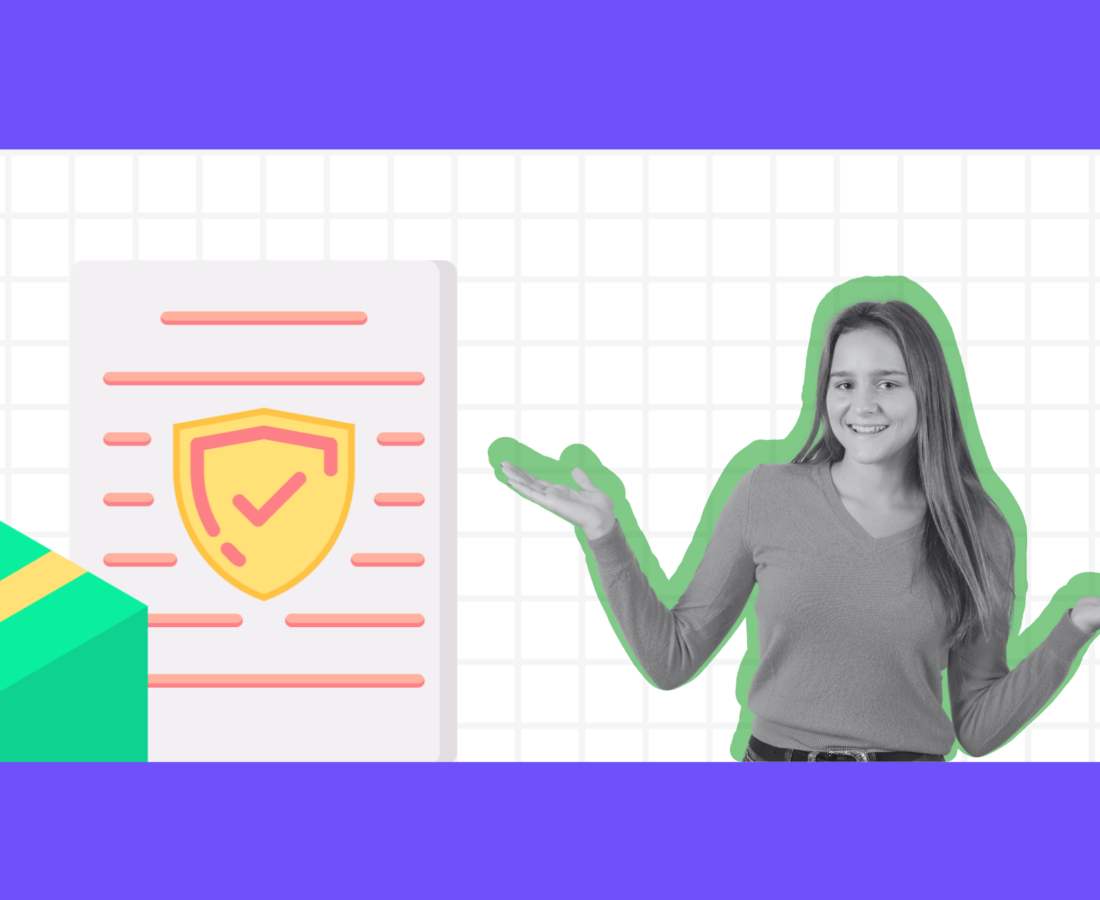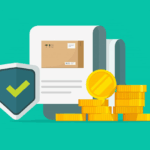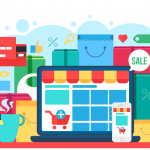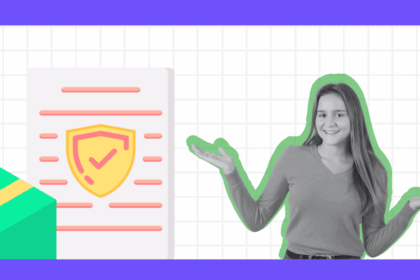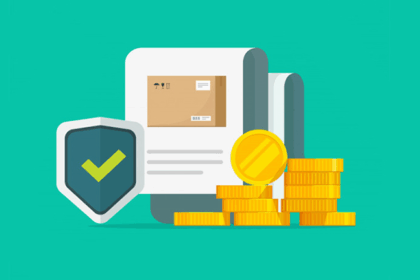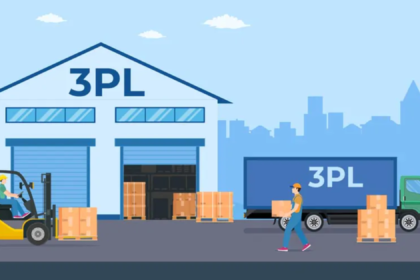E-commerce businesses are under pressure to deliver faster and more reliably than ever, with customer expectations rising tremendously. And logistics is where this battle is won or lost. For perspective, 52% of consumers expect their orders to be delivered within two to three days, indicating pressure on businesses to achieve these timelines.
Third-party logistics (3PL) fulfillment becomes important for scaling businesses and achieving speed, reach, and customer satisfaction. The right 3PL setup can reduce shipping times, minimize overhead, and unlock new markets without increasing headcount or infrastructure.
In this guide, we’ll break down what 3PL fulfillment is, how it works, and how you can choose the right 3PL fulfillment companies to ensure operational efficiency.
What is 3PL Fulfillment?
Third-party logistics (3PL) fulfillment refers to outsourcing your orders to a logistics company that manages the end-to-end shipping process. This includes warehousing, picking, packing, and shipping operations to a specialized partner.
It’s a model designed to help ecommerce brands scale faster by handing off the most resource-intensive parts of the supply chain, thereby saving on costs, resources, and time.
A typical 3PL partner operates one or more warehouses, integrates with your ecommerce store, and handles day-to-day order fulfillment. That includes receiving your inventory, storing it, processing customer orders, managing shipping carriers, and even handling returns.
3PL fulfillment gives emerging E-commerce businesses a competitive edge by ensuring faster delivery speeds, lower shipping costs through volume discounts, and the freedom to focus on product and growth instead of logistics.
3PL Fulfillment Process
At its core, 3PL fulfillment is about handing off the physical and logistical complexity of your order fulfillment process, from storing products to final delivery to a reliable partner. Here’s what a typical 3PL order fulfillment process looks like
1. Receiving products
The process starts with inbound logistics. Your inventory is shipped to the 3PL fulfillment service. Once received, they’re checked for accuracy, damage, and quantity, and a goods receipt note (GRN) is generated.
Every 3PL fulfillment company has its own system for receiving and storing inventory. For instance, depending on your e-commerce business’s needs, they may divide inventory between multiple 3PL fulfillment centers for faster access and delivery.
2. Warehousing and inventory management
After check-in, products are stored using bin, shelf, or pallet systems, depending on item size and turnover rate. These products may also be stored as per their SKUs, and each SKU will have a designated location.
This smart slotting and item optimization help reduce pick times and storage costs.
3. Picking
When you receive an order from a customer, it is assigned to a warehouse picking team, and the fulfillment process begins. The picking team gets a picking list of the ordered products, quantities, and storage locations around the facility to start collecting the order.
If you operate and receive orders from multiple channels, orders from each channel are combined to save time and improve efficiency.
While some 3PL fulfillment centers require you to manually upload the orders, others offer seamless integration of their digital warehouse with your e-commerce store to automatically push the orders.
4. Packaging
Once the order is picked, it is sent for packaging for secure transit and delivery. Packaging and material may be charged as a separate cost by a 3PL fulfillment company or included in their services.
Many 3PLs offer custom packaging, branded inserts, or eco-friendly options to match your brand guidelines. This step involves using packaging materials such as
- Carton boxes
- Packing tape
- Bubble wrap
- Packing straws
- Polybags
- Dunnage
And more. The goal is to protect the product during transit while keeping packaging costs optimized. Once the order is packed, a shipping invoice is generated, and the package is labeled for further shipping.
5. Shipping orders
The packed order is handed off to a carrier such as FedEx, UPS, DHL, or other local carriers based on your preferences, shipping needs, or 3PL’s preferred partners and negotiated rates.
At the same time, a 3PL provider may further divide the shipments with different courier partners to ensure faster and cheaper delivery. Once the order is shipped, the courier partner will likely share tracking details with your business and the final customer to ensure easy order monitoring in case of any delays.
6. Returns management
Not all packages that are delivered are accepted. Order returns are common, and for large e-commerce companies, managing them can be a hassle if done in-house. That’s why, they can partner with 3PLs to handle returns, which includes inspecting items, restocking inventory, or flagging products for quality issues.
An efficient reverse logistics workflow not only improves recovery rates but also boosts customer satisfaction.
Benefits of Using 3PL Fulfillment
Outsourcing order fulfillment allows you to unlock scalability, speed, and efficiency since the process is completely handled by a third-party provider. A 3PL partner can give growing brands the infrastructure and capabilities of a much larger operation, minus the capital investment.
Here are the core benefits of using 3PL fulfillment companies:
1. Faster and more reliable shipping
With strategically located warehouses, smart inventory management, and optimized shipping routes, 3PLs enable faster delivery by shipping from the nearest fulfillment center. Many offer 2-day or even same-day shipping options across major zones, helping you meet rising customer expectations.
Plus, these providers enjoy a well-established courier partner network, which enables them to reduce delivery times and enhance customer satisfaction with faster fulfillment.
2. Cost savings
3PLs handle shipping for multiple clients, which helps them enjoy economies of scale and the opportunity to negotiate better carrier rates. Not to mention, by partnering with 3PL fulfillment service, you also avoid fixed overhead costs like warehouse rent, staffing, transportation, and more.
So, the more you grow, the more cost-efficient the model becomes.
3. Scalability
During peak seasons or with business growth, you will need access to more storage, a larger transportation fleet, and excess staff. Handling this in-house not only adds to the costs but can quickly become messy and inefficient.
Partnering with a 3PL fulfillment provider offers you the flexibility to scale operations during seasonal fluctuations or growth periods. It allows companies to manage the increased order volume conveniently without the hassle of long-term investment in space, equipment, and people.
4. Access to 3PL resources
3PLs are built for logistics; it’s their core competency. Working with a 3PL provider offers you easy access to their global shipping network, advanced technology like Warehouse Management Systems, and deep industry expertise.
This way, you can achieve greater operational efficiency and benefit from an enhanced supply chain network, accuracy, and compliance without capital commitment.
5. Operational Flexibility
By outsourcing logistics and warehouse operations, the internal teams can easily keep their focus on core business operations, product strategy, marketing, and growth. This also allows you to allocate resources to key business tasks while the logistics are handled by industry experts.
6. Enhanced customer experience
Accurate, on-time fulfillment backed by real-time tracking means happier customers and fewer support tickets. Some 3PLs even offer branded tracking portals and proactive notifications, turning shipping into a positive touchpoint.
Key Services Offered by 3PL Providers
While fulfillment might sound like a single process, it is far more complex. Today’s 3PL providers offer a suite of services that go well beyond the standard picking, packing, and shipping services, often acting as full-fledged logistics partners.
Here’s a breakdown of the most important services a modern 3PL provider offers
1. Warehousing and Inventory management
This is a foundational service where 3PLs provide storage space for your products across one or multiple fulfillment centers, strategically located to optimize distribution. Items are stored based on order frequency or bundling patterns to reduce pick times and speed up delivery.
In addition, 3PL companies monitor stock levels, manage reorders, and ensure product availability to meet changing customer demands.
Most 3PLs use robust warehouse management systems to track inventory movements, quantities, and reorder thresholds. This data also syncs with your ecommerce platforms to prevent overselling and manage stockouts.
2. Order fulfillment
This forms the core of 3PL operations, where once an order is received, the 3PL handles the picking (selecting items from storage), packing (boxing items securely), and shipping (handoff to a carrier).
Leading 3PL providers rely on automated workflows that trigger pick-and-pack processes immediately after an order is placed, as well as batch processing to speed up fulfillment.
Some third-party logistics providers also offer same-day shipping services where the order fulfillment process is carried out on the day of purchase to get the orders faster to the customer.
3. Carrier management
Since 3PLs have a wide shipping and carrier network – FedEx, UPS, DHL, USPS, and even local couriers, they can dynamically choose the best option for each order based on destination, speed, or cost.
For wholesale, B2B, or heavy-item shipments, many 3PLs also offer freight solutions that cover less-than-truckload (LTL), full truckload (FTL), or ocean freight services.
4. Reverse logistics
Within e-commerce shipping and delivery, a well-managed returns process can reduce friction with the customer, help recover value, and even boost loyalty. An experienced 3PL streamlines this process by managing return labels, inspecting items upon return, and either restocking or flagging them for disposal or refurbishment.
Even better, since the return rate can depend on various factors, including the product type and packaging quality, 3PLs can help prevent returns by minimizing errors or potential damage in the first place.
5. Value-added assembly services
Beyond the core logistics functions, many 3PLs offer flexible services to meet specific business needs, including
- Kitting and assembly: This involves grouping multiple products into a single package or assembling items before shipping to enhance the shipping and customer experience.
- Subscription box fulfillment: If you have a subscription-based business model, 3PLs offer customized services such as timely, recurring shipments with personalized packaging.
- Custom packaging: Many 3PLs allow you to use branded boxes, eco-friendly materials, and personalized labeling to help you maintain brand consistency.
- International shipping and customs clearance: 3PLs also offer seamless international shipping services and manage complex cross-border logistics processes, including customs clearance and compliance.
6. Order tracking and visibility
Beyond order fulfillment and logistic services, 3PLs also provide access to real-time order tracking, from transit and pick-up to final delivery.
At the same time, these service providers also offer accurate metrics on fulfillment speed, order accuracy, inventory turnover, and shipping costs. These insights help brands make data-driven decisions around logistics and inventory planning.
Choosing the Right 3PL Provider
Choosing a 3PL provider is a strategic business decision that directly shapes the customer experience, operational efficiency, and bottom-line performance of the e-commerce business. So, it can help to establish selection criteria to ensure the 3PL provider meets your business needs and goals.
Learn more about: How to Choose the Right 3PL Selection Guide
Below are some of the factors you must consider:
1. Alignment with your business model
Before anything else, your 3PL should have operational experience with the fast-moving world of e-commerce shipments. This includes high-order volumes, seasonal fluctuations, direct-to-consumer (DTC) shipping, and marketplace integrations.
If they’re used to handling traditional B2B shipments or slower distribution cycles, they may struggle to meet the pace and expectations of modern online retail.
Look for a 3PL that’s already working with ecommerce brands similar to yours – in terms of product type, average order volume, and sales channels. Their infrastructure, processes, and team should be optimized for pick-pack-ship efficiency, high order accuracy, and same-day fulfillment.
2. Location
The location of your customers should directly influence the location of your inventory. If your 3PL only has a single warehouse in a particular location but your customer base is spread across locations, it will inevitably lead to slower deliveries and higher shipping costs.
A strategically placed network of 3PL fulfillment centers helps you move inventory closer to where the demand is. This not only shortens last-mile delivery windows but also improves customer satisfaction by increasing the likelihood of 1- or 2-day shipping.
3. Technology
Access to advanced technology is essential for seamless integration with your e-commerce platform, order management system, and post-purchase experience platform like LateShipment.com.
This ensures smooth data flow and fewer manual interventions. Plus, this allows you to track orders in real time, monitor inventory levels, and automate fulfillment without relying on back-and-forth emails with the 3PL provider.
Read more: 3PL Automation: How to Streamline Logistics Operations
4. Operational transparency
A good 3PL company must be upfront and transparent about its services and operations. Before partnering with one, ask these questions: what’s their average pick accuracy? Do they guarantee same-day fulfillment for orders? What happens when a package goes missing or is damaged in transit? How quickly will you be notified of delays or exceptions?
The right partner will take accountability when things go wrong. To ensure the highest level of customer satisfaction, look for providers that offer transparent reporting, automated alerts, and fast remediation processes.
But what about when shipment delays and service failures do happen? Parcel and Shipping Invoice Audit Software from LateShipment.com can automatically detect 50+ service failures, automate shipping invoices, and manage refund recovery and redressal processes easily.
5. Ability to scale
Your 3PL should be built to grow alongside your business, not limit it. That means they should be able to handle seasonal spikes, new product lines, international shipping needs, and evolving fulfillment strategies without missing a beat.
The key here is flexibility. Determine if they can adjust storage and labor requirements as orders fluctuate. Are their systems built to onboard new SKUs or sales channels quickly? Do they charge you extra for changes in order volume or offer adaptable service models?
Once you have the answer, you can consider partnering with the business.
6. Customer support
Even with strong systems in place, issues will arise, especially during peak season or rapid growth phases. In those moments, the quality of support can make or break your customer experience.
A responsive 3PL should proactively monitor shipping performance and intervene when needed. More importantly, they should have clear redressal processes, service-level agreements for issue resolution, and communication channels for reliable support.
Potential Challenges and How to Mitigate Them
Partnering with a 3PL can unlock serious growth, but it does not come without risks. Handing over fulfillment to an external partner means surrendering some control over a few critical processes.
Here are some of the most common challenges e-commerce businesses might face with 3PLs and what you can do to stay ahead of them.
1. Communication Issues
Slow or unresponsive support can quickly escalate minor issues into major bottlenecks, especially when dealing with time-sensitive shipments or exceptions. If you’re constantly chasing updates or repeating requests, it can do more harm than good for your operations.
At the same time, a lack of clear communication can affect visibility into the supply chain, leading to delays and errors that affect customer experience. So, it’s important to set expectations for response times and establish a regular cadence for performance reviews or check-ins.
2. Handling returns
Managing returns and damaged products is a crucial aspect of customer experience, but it can be challenging to handle if your 3PL provider is not big on timely communication.
Implementing solid return policies and automating the refund and recovery process with a tool like LateShipment.com is important to track returns and minimize losses. It will not only improve customer experience with quick return handling but also help your business recover every penny in case of lost or damaged shipments.
3. Hidden Costs
From storage overages to custom packaging or pick fees, 3PL pricing structures can be complex. As a result, you might get caught off guard by charges that can eat into your profits.
So, make sure to read the pricing agreement before signing. Understand how they bill for storage, how returns are handled, and what can lead to additional charges. It is important to ensure all variable costs are clearly defined.
Conclusion
A well-established 3PL fulfillment process via a reliable partner can help you move faster, scale smarter, and focus on what you do best, and that’s growing your e-commerce business and serving your customers.
But smarter fulfillment requires robust oversight to ensure that no delays or service failures can affect your customer experience and impact the brand reputation. That’s why you need a highly reliable, scalable, and advanced post-purchase experience platform like LateShipment.com.
By integrating a Parcel and Shipping Invoice Audit Software from LateShipment.com, businesses can monitor shipments, detect any delivery or service failures, and recover refunds for late deliveries or damaged shipments — automatically.
Plus, the system seamlessly integrates with top carrier partners such as FedEx, UPS, DHL, and more, so you can track carrier performance and manage discrepancies easily.
Learn how LateShipment.com can streamline shipment tracking and audits. Schedule a demo today!
FAQs about 3PL Fulfillment
Can I use multiple 3PLs for different regions or product lines?
Yes, many ecommerce brands adopt a multi-3PL strategy to reduce shipping times and costs across different geographies or to handle fulfillment separately for individual product categories. Also, ensure your systems can sync inventory and orders across providers without creating silos.
What are the different types of 3PL services?
The four main types of 3PLs are- Standard 3PL providers, Service Developers, Customer Adapter 3PL, and Customer Developer 3PL.
Do 3PLs handle international shipping and customs clearance?
Some 3PLs offer cross-border logistics and handle customs paperwork, duties, and international compliance. If global expansion is one of your long-term goals, determine their expertise in international shipping and processes in advance.
What’s the difference between a fulfillment center and a 3PL provider?
A fulfillment center is one part of the entire fulfillment process— it’s the physical warehouse where products are stored and shipped. A 3PL provider offers a complete logistics service, including storage, order picking, packing, shipping, returns, and often value-added services like kitting or branded packaging.


